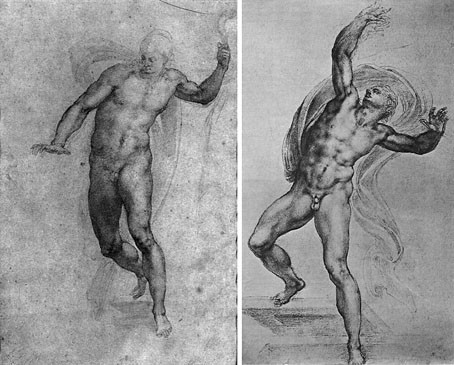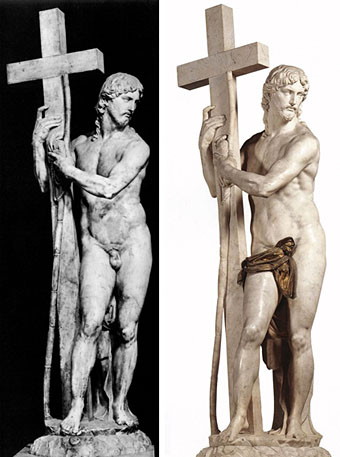When you create art, or when you write something, you always risk offending someone somewhere.

There’s nothing you can do as an artist to avoid someone not liking your work. You just keep working and let the work speak for, and defend, you.
The danger comes when outsiders press censorship of the work — as you can see below when clothes were painted on Goya’s “Nude Maja.”


Michelangelo’s naked, cross-carrying Christ, also had his penis covered up in the name of transitory morality over the righteousness of the eternal human form.

Who can forget Andres Serrano’s honoring of Jesus Christ on the Cross in — “Piss Christ” — where the Lord and Savior was immersed in the artist’s urine in a beaker?

Where do we draw the line between morality and art? Are they intermixed and combined in the heart and mind?
Such good lessons here in the pictures. Can’t cover up good taste but you can bad.
There certainly is bad taste in the editing of the original work, Karvain, and that clumsy effort give so much more power and purpose to the original.